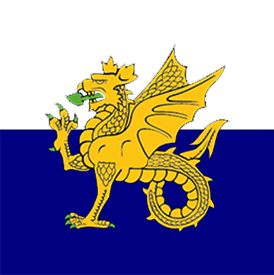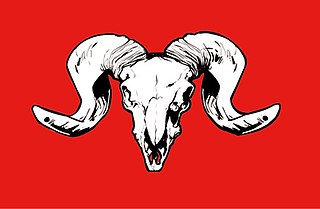
The Royal Regiment of Artillery, commonly referred to as the Royal Artillery (RA) and colloquially known as "The Gunners", is one of two regiments that make up the artillery arm of the British Army. The Royal Regiment of Artillery comprises thirteen Regular Army regiments, the King's Troop Royal Horse Artillery and five Army Reserve regiments.

104 Regiment Royal Artillery is part of the British Army Reserve and has sub-units throughout Wales and the West Midlands of England. It is equipped with the 105mm Light Gun.

105th Regiment Royal Artillery is part of the Army Reserve and has sub-units throughout Scotland and Northern Ireland. It is currently equipped with the L118 Light Gun.
101 (Northumbrian) Medium Regiment Royal Artillery is part of the Army Reserve and has sub units throughout the north east as well as one sub unit in Leeds, West Yorkshire. It is equipped with M270 Multiple Launch Rocket System (MLRS).

The 42nd Infantry Brigade, also known as 42 Brigade, was a brigade of the British Army.

37th Signal Regiment is a military communications regiment of the Royal Corps of Signals, part of the British Army. The regiment was one of ten Territorial Army,, units formed following the complete reorganisation of the Territorial Army in 1967. Until the Army 2020 programme in 2012, the regiment provided national communications support and its squadrons providing support to the regional brigades, notable 143rd and 160th (Welsh) Brigades. However, from 2014 the regiment was re-roled and now paired with 2nd Signal Regiment supporting 1st Division.

The Duke of Lancaster's Own Yeomanry (DLOY) was a yeomanry unit of the British Army from 1798 to 1992. Originally raised as part-time cavalry for home defence and internal security, the regiment sent mounted infantry to serve in the Second Boer War. During World War I it carried out mounted duties in Egypt and Palestine and on the Western Front. By 1917 the reserve units at home had become cyclists and the regiment serving on the Western Front joined an infantry battalion, seeing action at the Battle of Passchendaele, against the German Spring Offensive and in the final Allied Hundred Days Offensive. At the beginning of World War II the regiment gave up its horses and formed two regiments of medium artillery, which served in the Middle East, Italy and North West Europe. Postwar it became an armoured unit. Today its lineage is maintained by B Squadron, the Queen's Own Yeomanry.
In September 1939, the British Army was in process of expanding their anti-aircraft and mobile assets. Among these new changes was the formation of Anti-Aircraft Command which was formed on 1 April 1939, and the 1st Armoured Division formed in 1937. The list below will include the British Army units, colonial units, and those units which were in the process of formation.

The 1st Artillery Brigade was a support formation of the British Army from 1961-77 and from 1997. Part of the 3rd Division, it oversaw all army close support artillery and deep fires units. Under the Future Soldier programme, the brigade merged with 1st Armoured Infantry Brigade to form 1st Deep Reconnaissance Strike Brigade Combat Team.

The page contains the current structure of the British Army. The British Army is currently being reorganised to the Future Soldier structure.

The 5th Battalion, South Lancashire Regiment, was a unit of the British Army's Reserve Forces first established in St Helens, Lancashire, in 1860. It served as infantry in some of the bitterest fighting on the Western Front in World War I and as a searchlight regiment in Anti-Aircraft Command during World War II.

Mill Street Barracks is a military installation in St Helens, Merseyside.
The following is a hierarchical outline for the structure of the British Army in 1989. The most authoritative source for this type of information available is Ministry of Defence, Master Order of Battle, and United Kingdom Land Forces, HQ UKLF, UKLF ORBAT Review Action Plan, HQ UKLF, 1990.

Kimberley Barracks is a military installation on Deepdale Road in Preston in Lancashire, England PR1 6PR.

The 100th (Yeomanry) Regiment, Royal Artillery, formerly the National Reserve Headquarters, Royal Artillery is an Army Reserve administrative group of the Royal Artillery which oversees the recruitment and maintaining of specialist reserve units and personnel.
Ubique Barracks, Widnes is a military installation of the British Ministry of Defence occupied by the British Army located in Widnes, Cheshire WA8 6TH, England.













